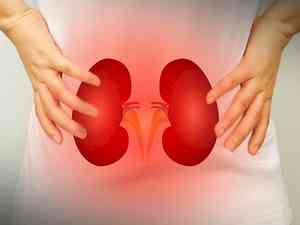Sinus Infections Demystified: Symptoms, Differences, and Care Tips
Sinus infections can be bothersome and uncomfortable, particularly when they persist. Although rare, untreated sinus infections can sometimes lead to serious complications. Chronic sinusitis affects one in eight Indians and is also known as rhinosinusitis.

by Dr Harshalatha S, Ent and Head and Neck Cancer Surgeon, Ramakrishna Super Speciality Hospital, Bengaluru
Sinus infections can be bothersome and uncomfortable, particularly when they persist. Although rare, untreated sinus infections can sometimes lead to serious complications. Chronic sinusitis affects one in eight Indians and is also known as rhinosinusitis.
There are four paired sinus cavities in the human skull, and there are small passage ways between them. The thin, watery mucus produced by these sinuses often flows freely into the nose, keeping it sanitary and free of germs, allergies and other pathogens. On the other hand, mucus thickens and causes fluid to accumulate in the sinuses as a result of bacterial, viral, or allergy infections that cause inflammation. This results in pain and pressure.
It might be difficult to distinguish between sinus infections, allergies, COVID-19, and colds because they all have similar symptoms. A cold usually takes a few days to a week to develop, peak, and then gradually go away. Symptoms of nasal allergies include runny nose, postnasal drip, congestion, itchy eyes and nose, and sneezing, but they typically do not cause facial pain like sinus infections do.
The sinuses are lined with cilia, tiny hairlike structures that sweep mucus out of the sinuses and into the nose, clearing germs and pollutants. Viral sinusitis occurs when a cold virus infects the sinuses, inflaming the sinus membranes. Bacterial infections can also trigger sinusitis. Sinusitis is classified based on duration (acute, subacute, chronic, or recurrent) and causative agent (bacteria, virus, or fungus).
Symptoms of sinusitis include sinus pressure and pain, nasal congestion, thick, discolored nasal discharge (often yellow or green), decreased sense of smell, fever, headache, upper jaw tooth pain, and fatigue.
The symptoms of sinusitis can be reduced by over-the-counter treatments like steam inhalation, saline nasal drops, warm compresses applied to the face, and humidifier use.
Seeking medical help for severe or persistent symptoms is crucial for accurate diagnosis and treatment. Treatment usually includes antibiotics, antiallergic medications, decongestants, and pain relievers to manage symptoms effectively and prevent complications.
Sinus infections caused by fungi are typically more severe, especially in individuals with weakened immune systems.


 City Air News
City Air News 











